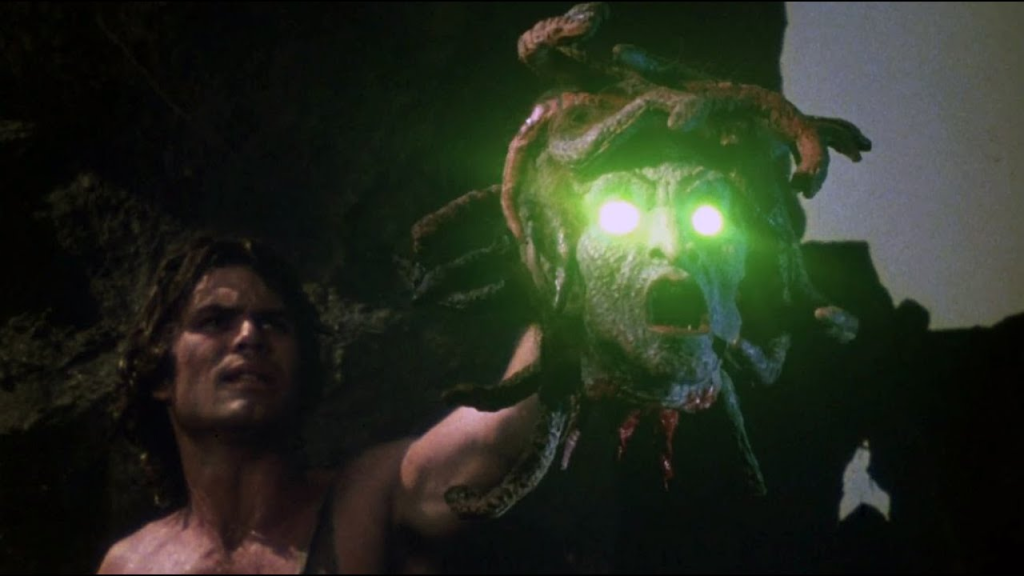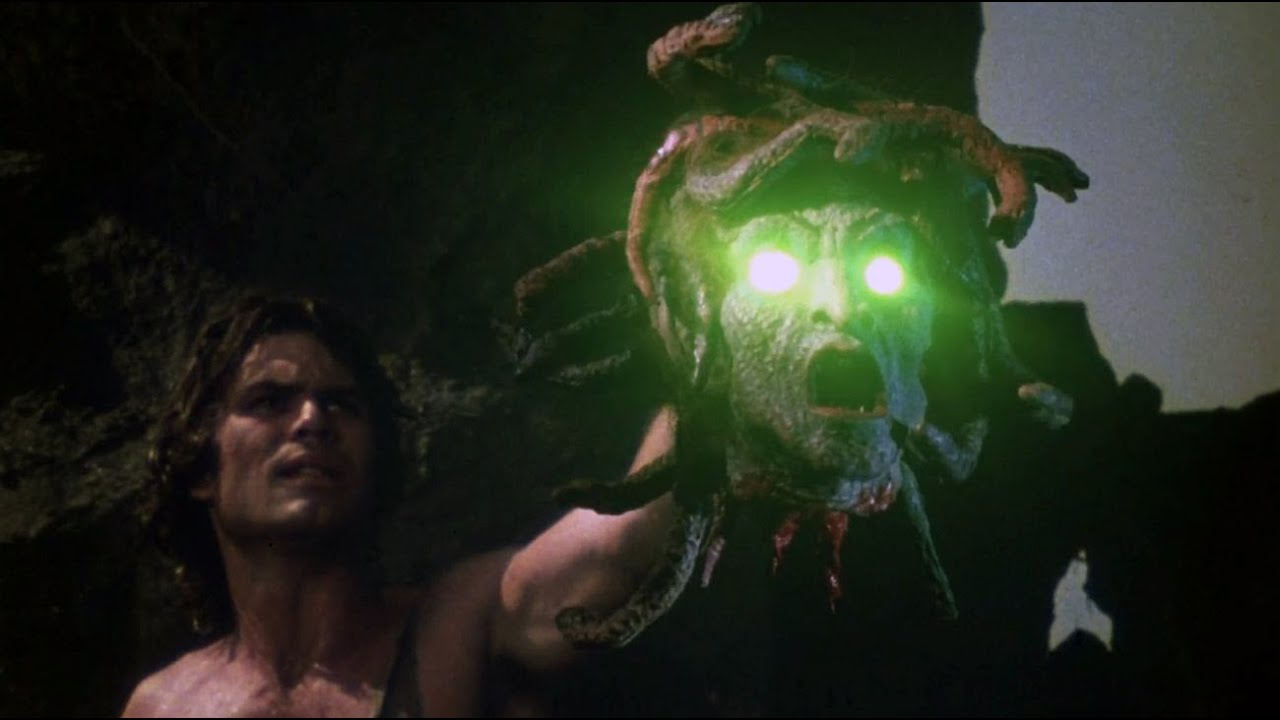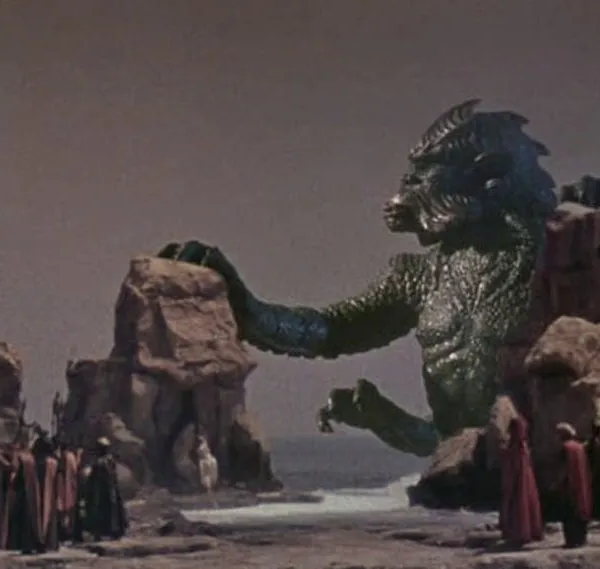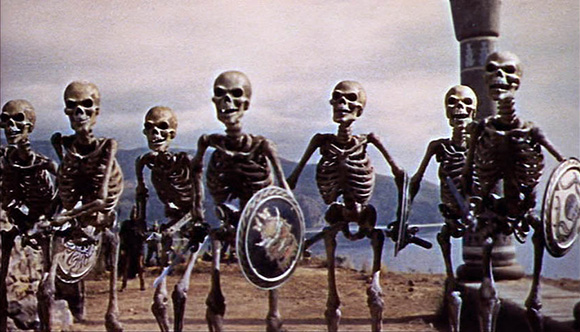October Monster Mash: “Don’t Look Now!” – Medusa, the Stone-Cold Queen of Horror

The Monster Who Turned Heroes to Stone
In the pantheon of movie monsters, few are as haunting—or as hypnotic—as Medusa from Clash of the Titans (1981). Equal parts tragic myth and terrifying creature, she slithered onto the screen in one of Ray Harryhausen’s most chilling stop-motion triumphs. With her serpentine body, glowing eyes, and crown of living snakes, Medusa became more than a monster—she became a nightmare you couldn’t look away from.
Based on the ancient Greek myth, Medusa was one of the Gorgons, cursed by the gods and doomed to turn anyone who gazed upon her into stone. In Clash of the Titans, this myth was reborn through Harryhausen’s artistry, giving audiences one of the most unforgettable monsters ever crafted.
A Masterpiece of Stop-Motion Terror
The Medusa sequence in Clash of the Titans is often hailed as Ray Harryhausen’s greatest work. Every flick of her tail, every rattle of her bow, every hiss of her serpentine hair was painstakingly animated, frame by frame.
The scene unfolds in a dimly lit temple, illuminated only by flickering torches and the eerie glow of Medusa’s eyes. As Perseus creeps through the shadows, the tension is palpable. We hear the slither of scales on stone, the soft rattle of her tail, and the hiss that sends chills down the spine. When Medusa finally appears, the combination of stop-motion animation and live-action lighting creates a seamless, haunting realism that still holds up today.
Unlike most of Harryhausen’s creatures—majestic beasts or noble giants—Medusa is pure nightmare fuel. Her design perfectly embodies horror: half-woman, half-snake, with decaying flesh, glowing eyes, and serpents writhing atop her skull. She’s not just a mythological figure—she’s a living embodiment of fear.
The Myth Behind the Monster
Long before Clash of the Titans, Medusa’s story was one of sorrow and vengeance. In Greek mythology, she was once a beautiful maiden who was transformed into a monster by Athena as punishment (or, in some versions, vengeance) for being desecrated in the goddess’s temple by Poseidon.
Her curse—to turn all who looked upon her to stone—was both a punishment and a defense. Medusa’s story speaks to the themes of transformation, power, and isolation. She’s not merely a villain but a tragic figure, a woman cursed to be forever alone, her gaze deadly even to those she might have loved.
Harryhausen’s version captures this duality. She’s monstrous, yes—but also sorrowful. Her lair feels like a tomb, her existence defined by endless solitude. When Perseus finally decapitates her, there’s a sense of grim mercy as much as victory.
A Scene That Still Turns Heads
The Medusa sequence remains a high watermark for practical effects. The lighting, camera work, and sound design all heighten the tension. The flickering fire casts moving shadows across the walls, emphasizing the danger of her deadly stare. Perseus’s use of his mirrored shield to avoid her gaze adds both cleverness and mythic weight to the battle.
Even after decades of technological advances, few CGI monsters have captured the same visceral terror. Medusa’s movements—slightly unnatural, yet eerily graceful—feel otherworldly in a way digital perfection rarely achieves.
The Enduring Legacy of Medusa
From ancient statues to modern art, Medusa remains a symbol of both fear and fascination. In Clash of the Titans, she transcended mythology to become an icon of cinematic horror. Ray Harryhausen’s design influenced countless later depictions—from video games to comic books to modern films—and her image still commands power today.
What makes her unforgettable is that she’s more than a monster. She’s tragedy, beauty, and death intertwined. She reminds us that some monsters aren’t born—they’re made by the cruelty of gods and men.
Conclusion
As part of our October Monster Mash, Medusa slithers into the spotlight as a creature both terrifying and timeless. She’s proof that true horror doesn’t always scream—it can whisper, hiss, and wait in the dark with eyes that see too much.
So if you ever find yourself wandering an ancient ruin this October, remember the oldest rule of all:
Don’t look her in the eye.




